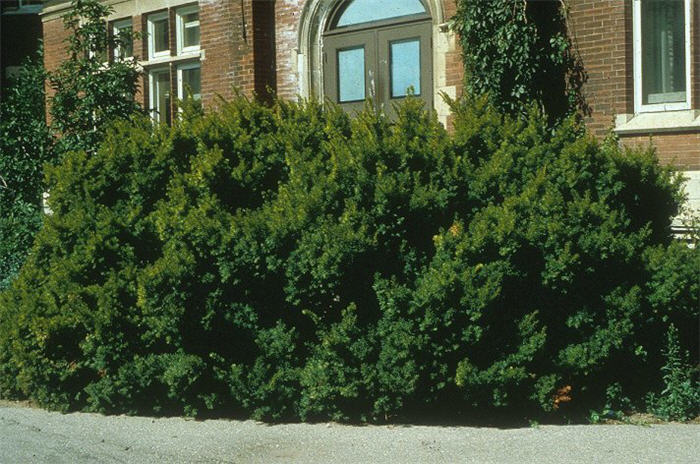| Botanical Name: Taxus cuspidata | |
| Common Name: Japanese Yew |

-
Anatomy
-
Culture
-
Design
Plant Type
Conifer, Shrub
Height Range
3-6', 6-12', 12-25'
Flower Color
n/a
Flower Season
n/a
Leaf Color
Green, Dark Green, Light Green
Bark Color
Grey
Fruit Color
Red
Fruit Season
Fall
Sun
Full, Half, Shade
Water
Medium
Growth Rate
Slow
Soil Type
Sandy, Loam, Rocky
Soil Condition
Average, Rich, Poor, Well-drained, Moist, Dry
Soil pH
Acid, Neutral
Adverse Factors
Poisonous
Design Styles
English Cottage, Formal, Japanese, Mediterranean, Ranch, Woodland
Accenting Features
n/a
Seasonal Interest
Winter, Spring
Location Uses
Background, Shrub Border, Foundation, Patio, Park, With Rocks
Special Uses
Hedge, Screen, Topiary
Attracts Wildlife
n/a
Information by: Stephanie Duer
Photographer:
Photographer:
-
Description
-
Notes
The evergreen yews in this species tend to up generally upright and spreading, becoming wider than they are tall. Heights range from a couple of feet to 10 or 20 feet, though they are slow growing. New growth is a bright yellow-green, with the growth being very soft. Otherwise, the foliage is a dark, lustrous green. Flowers are inconspicuous, but the following fruit is very red.
It's a shame, but most folks who plant yews never get to enjoy it's beautiful, soft, bright yellow-green spring foliage because they are forever shearing or hedging the poor things. Select the right yew for the space, and prune it selectively in late winter, and you will find you spend a lot less time pruning. See the how-to's. Yews are not drought tolerant, really, but generally manage quite well on considerably less water than is usually offered. Plant so it receives morning sun or full shade, in good, well draining soil.